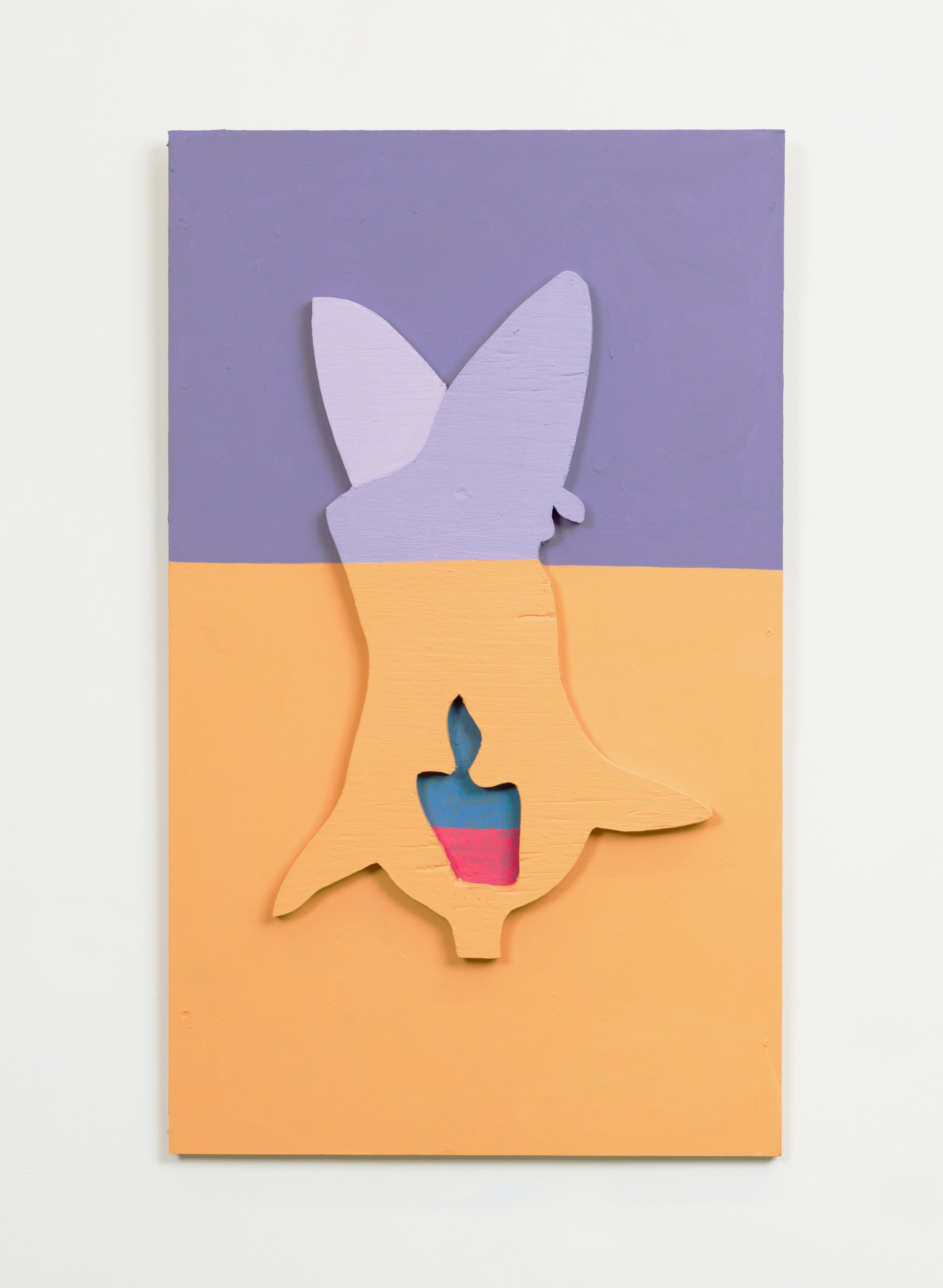Maritime Gardens
2024
Maritime Gardens is a series of sculptural wall works that continues my interest in possible intersections of art and small-scale entrepreneurship. It is also the third iteration of a three-part series examining aspects of the Lebanese immigration experience to New Brunswick in the early 20th century.
Last summer I created a series of hand-painted wooden garden ornaments that were made to be saleable items for a functioning small-scale side business. I wanted to start an enterprise where hand-made objects were economically accessible and easy to understand, outside of the complexities of the contemporary art framework. The business was a flop as I sold none of the pieces. I created an Instagram page and an Etsy shop to sell them and to gauge interest before I made more and put them on my front lawn for passersby on their way to St. Martins, an oceanside town that gets busy in the summer with tourists. Even though the ornaments were priced modestly at $25-$75, there was no interest. My forecast that this type of object, in this context and for this price would be a sustainable business, was completely off-base.
The objects, however, continued to interest me. I didn’t want the effort or materials to go to waste, so I used them as source material for a series of wall works entitled Maritime Gardens, the same name as the failed business. The objects in their current finished state are intended to operate as documents of this business attempt while mirroring the process in which small businesses evolve. The project is a sustainable commercial enterprise that resides idealistically outside of the capitalist framework. The works have been made using pre-existing and other-intentioned objects as well as referencing past series of my work, including Second Eye, High Gloss Ceilings, and PWYCOBO. The series also continues my long-standing interest in artist labour and the economics and politics of artistic production as it relates to consumption. I have been interested in the intersection of art and small-scale entrepreneurial endeavors for some time now, and have initiated multiple side businesses, art-and-business amalgams, and conceptual businesses over the years.
In keeping with the spirit of the initial home/online business endeavor, the new iterations of Maritime Gardens are being presented outside of the gallery context. They are art, but they are equally something else, and this hybrid necessitates a particular venue-less context. They cannot be sold like my other art objects are sold because some were once $25 in their former states. And they can not be sold for $25 because they are art pieces now and have a signature by someone with a CV. So, it will be somewhere in between.
The works and ideas in Maritime Gardens are positioned in a pragmatic reality. They exist because of a failure and a need to adapt a premise that did not work. The pieces as they exist now will also go through a similar process of dissemination as their progenitors. There will be a discovery if they have desirability in their current state or not, but they will remain as they are because they are finished. There is a process of trial and error in new ventures as entrepreneurs, where experimentation is ongoing to see what works. This mirrors the process of painting. Seeing what happens if something is changed, what happens when paint is applied to a particular section. Everything is based upon decisions and risk, and it is this commonality that runs through painting and business that I find interesting.
Similarly, I have been considering the common narrative of Lebanese newcomers to New Brunswick in the early 20th century beginning their entrepreneurship in Canada as itinerant peddlers and then over time upgrading to the ownership of a brick-and-mortar store. The store is emblematic of the evolution of practice and is a current that runs through my family. My great-grandfather, grandparents, parents, several uncles, aunts, and cousins, and I have all been store owners. The small-scale store, as a business model and as a method to manifest autonomy, exists as an alternative to predominant economies and as an expression of cultural dispositions.
The ornaments in their original state can be viewed here.








